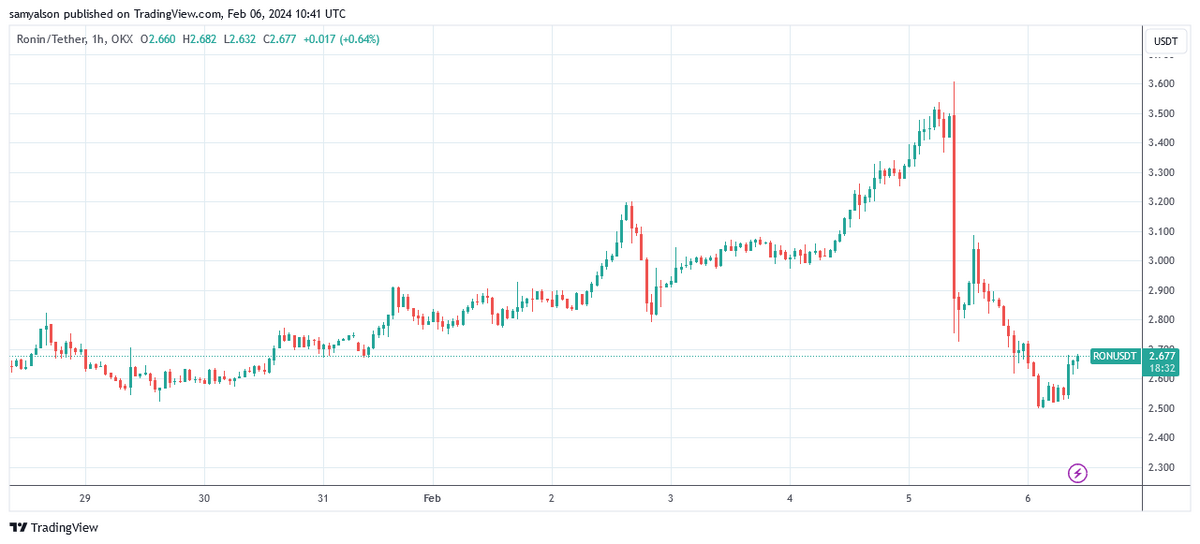
- The Ronin token tanks following a leak of its Binance listing.
- Yi He announces tough new measures to combat employee corruption.
- The new measures include financial incentives.
The Binance Ronin token listing on February 5 represented a strong nod to the blockchain gaming sector, which is forecast to be worth tens of billions of dollars by 2030. Yet RON’s Binance debut was marred by an abrupt crash in the token’s price, triggering swirling speculation of insider trading.
Binance co-founder Yi He initiated an internal investigation. The findings confirmed that the listing details had been leaked before the public announcement. In response, He unveiled a comprehensive set of measures to combat corruption within Binance and prevent any recurrence, including substantial bounties of up to $5 million to expose corrupt employees.
Binance’s He Intends to Stamp Out Corruption
He announced new measures and policy changes in retaliation against corrupt Binance employees, such as encouraging whistleblowers to come forward with bounty offers of between US$10,000 and US$5 million. He mentioned that earning bounty rewards was “much easier and more profitable” than being involved with corrupt practices.
Sponsored
In addition, He tweeted that Binance will strengthen its internal management procedures around token listings, particularly concerning staff management and communications with external partners. Furthermore, the Binance co-founder stated that firms employing Binance staff fired for corruption will be permanently boycotted by the company.
Driving the point home, He minced no words when she declared that any future listing leaks would prompt the cancellation of the token listing. Notably, she remains open to suggestions regarding alternative approaches for addressing staff corruption by encouraging individuals to contact her and provide feedback.
However, He’s hardline response to insider trading was too late to prevent Ronin’s price collapse.
Ronin Token Tanks
Before Ronin’s price collapse, the token was in a three-month uptrend, recording a 106-week high at $3.60 on February 5 at 09:00 UTC. But RON investors were in for a rude awakening as sell pressure dipped the 09:00 UTC hourly candle as low as $2.75.
Sponsored
Binance opened RON trading at 13:30 UTC, leading to a slight bounce that peaked at $3.09. But this was insufficient to reverse bearish momentum, leading to a drop that found support at $2.51 in the early hours (UTC) of February 6. RON has since attempted to break $2.68 resistance twice, being rejected on both occasions at the time of writing.

On the Flipside
- Binance co-founder Changpeng Zhao (CZ) remains in the US, awaiting criminal sentencing after pleading guilty to money laundering charges.
- Despite the US Department of Justice charges against Binance and CZ, the company retains its title of largest exchange by trading volume.
- Ex-Coinbase employer Ishan Wahi was sentenced 2023 to two years in prison for tipping off associates on token listings before public announcements.
Why This Matters
The Ronin incident is not the first case of insider trading and won’t be the last. Binance’s strong response is a welcome development in the fight to root out corruption but is likely an overcompensation designed to portray the company positively in light of staff malpractice.
Read about Binance user data turning up on the dark web here:
Binance Leak Murmurs Spark User Data Security Concerns
Find out more on the growing Bitcoin DeFi narrative here:
Is Bitcoin DeFi Ready to Challenge Ethereum’s Dominance?
